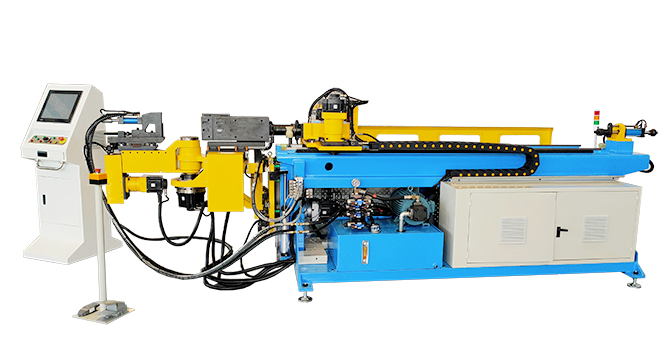In practice, there are many different pipe bending processes. In the project, it is usually divided into cold bending and hot bending according to whether the bending is heated or not. The cold bending method is used to bend the pipe at room temperature. Because there is no heating during bending, it is more suitable for bending iron pipe, stainless steel pipe, aluminum pipe and copper pipe. The common cold bending methods are rolling bending, pulling bending, pushing bending and pressure bending. Generally, the bending radius of cold bending should not be less than 1.5 times of the pipe diameter. Because the pipe has a certain elasticity, when the external force applied during bending is eliminated, the pipe will spring back to an angle, and the bending die of the pipe bender must have a certain amount of bending. The amount of spring back is related to the mechanical properties, wall thickness and bending radius of the pipe material. Pull around bending is to clamp the pipe on the bending die and rotate with the bending die. When the pipe is pulled over the pressure block, the pressure block will bend the pipe around the bending die, which belongs to the forming die bending process. The position of the mandrel relative to the bending point is very important in drawing and winding bending. Although the ellipticity can be reduced by a certain position of the mandrel relative to the bending point (the working end of the mandrel enters into the bending section of the pipe), when the mandrel is too advanced, the tube wall thinning will be increased. Therefore, the position of the mandrel should be determined after 3-4 bending samples. In addition, it should be considered that the mandrel must move backward when bending thick wall tube and forward when bending thin wall tube.
Compared with hot bending, the cold bending of automatic pipe bender needs more bending power, and the spring back and residual stress increase obviously. The full-automatic pipe bender cannot bend sharp bends with small radius of curvature. Hot bending can form small radius elbow on the pipe. For carbon steel pipe and most alloy steel pipe, the bending radius of hot bending is much smaller than that of cold bending by automatic pipe bender, and the bending radius can be as small as 0.7-1.5 times of the outer diameter of the pipe. However, hot bending still has the following disadvantages: complex equipment, high processing cost, low production efficiency and poor surface finish. For copper pipe, the cold bending process of automatic pipe bender eliminates the possibility of hydrogen disease due to the high temperature heating.
If possible, all kinds of pipes should be cold bent by automatic pipe bender. Only in the following cases can hot bending be used.
(1) The bending radius of the pipe is less than the bending radius specified by the automatic pipe bender or the bending radius of the existing mold.
(2) The pipe shape is complex or there is no straight pipe section between elbows, so it cannot be fixed on the automatic pipe bender.
(3) Because the pipe wall is too thin, the automatic pipe bender is easy to produce large collapse and wrinkle after cold bending.
(4) At present, there is no such mould for pipes with larger diameter or not commonly used.
(5) When the pipe wall is too thick for cold bending by automatic pipe bender




 English
English français
français русский
русский español
español português
português العربية
العربية Türkçe
Türkçe ไทย
ไทย Tiếng việt
Tiếng việt chinese
chinese





